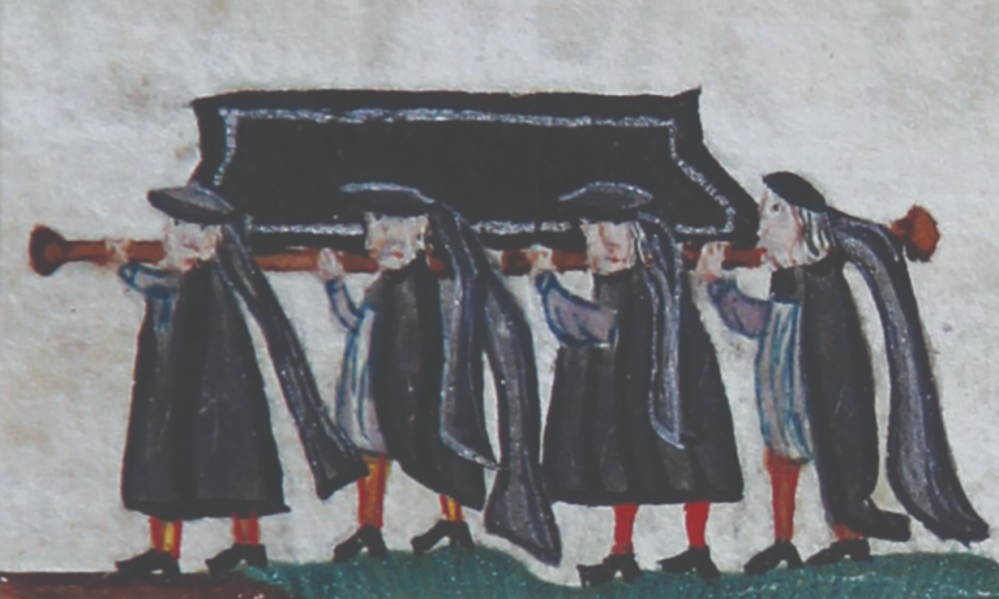We are in a period of potential Haggadah overload. Luckily, art historian Adam S. Cohen serves as a more than capable guide to the variations in Signs and Wonders: 100 Haggada Masterpieces. In it, he surveys the history of the illustrated Haggadah from the Middle Ages to today. The 100 images reproduced, along with his erudite explanations, serve as an excellent primer for those interested in the beauty of Haggadah imagery. Moment speaks with Cohen about his new book and the general role of the Haggadah.
What led you to write a book about Haggadah art?
I have observed Pesach my whole life. And as a certified, card-carrying Ph.D. art historian with a specialty in the Middle Ages, I have worked on the most Christian works you could possibly imagine. So I thought it was high time that I blended together these two parts of my life. It seemed like a natural way to exercise my skills as an art historian by looking specifically at the history of illustrated Haggadot. Especially because—as I was surprised to discover—there was no such book.
Well, there have been books in the past concentrating on various Haggadahs, such as Yosef H. Yerushalmi’s Haggadah and History.
Yes, and Yerushalmi was, in many ways, the great model for my own book. The layout is very similar to Haggadah and History. My working title was initially Haggadah and Art History, because Yerushalmi starts with printed Haggadot in the 16th century and comes into the present. But it’s all printed books, and he tells the story from a historian’s point of view. I start in 1300 with medieval manuscripts, and I come to a more contemporaneous presence. I look at the material specifically from the vantage point of an art historian. There are advantages and disadvantages to that. Certain very important Haggadot are not in my book because they’re not illustrated.
With so many Haggadahs around, how did you choose which images to use?
I looked for things that were both representative of their kind and could tell a bigger story beyond themselves—ones that revealed a moment, not just an artistic expression. At the same time, I wanted Haggadot that themselves were visually interesting, that were produced by artists of some ability. I also wanted to have a rich variety of imagery, so there are only one or two “four son” pages. You can tell a whole book with the four sons or images of the Exodus. But I really wanted to try and communicate the whole spectrum of possible imagery.
How did you apply your medieval art background to analyze modern day Haggadot?
It was a double-edged sword. On the one hand, it was so refreshing to be able to talk to artists. Normally I don’t get to do that. When it comes to interpreting medieval art, Marc Epstein could say one thing, I could say another thing. And it’s a matter of debate. You don’t have the artist to tell us which one is right. On the other hand, sometimes modern artists don’t want to tell you what they were thinking or they want you to come to your own conclusions. So in the end my skills in picking out anomalous images or looking at composition, color, layout and basic art historical methodology applies as much to modern contemporary Haggadot as they do to things from the Middle Ages.
Why are modern Haggadot so interesting?
Modern Haggadot are so individualized and so particular to an increasingly targeted audience. In a way that’s not true in the 17th or 19th century, where things were much more traditional and standard. Something I hope I bring out in the book is that great diversity, and the explosion of the variety of different Haggadots in the 20th and 21st century.
Did you learn or come across anything that surprised you?
Probably the biggest surprise was the number of Kibbutz Haggadot that were generated both by an individual Kibbutz, often on a kind of mimeograph. And then others that were much more accomplished. They were some of the artistically more accomplished Haggadot I found. These Haggadahs are absolutely stunning, gorgeous, moving, powerful, by artists who colleagues in Israel tell me are utterly unknown. If I managed to rediscover a few more modern Israeli artists, I think that would be a nice contribution.
Image: Nathan ben Abraham Speyer of Breslau Haggada. Jerusalem, National Library of Israel. Photo reproduced by permission of the National Library.

